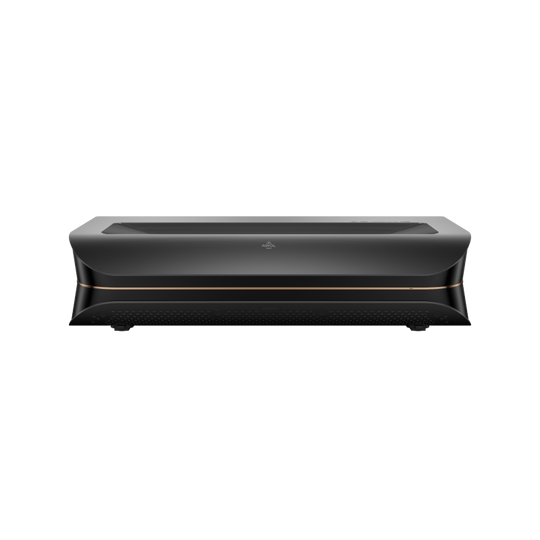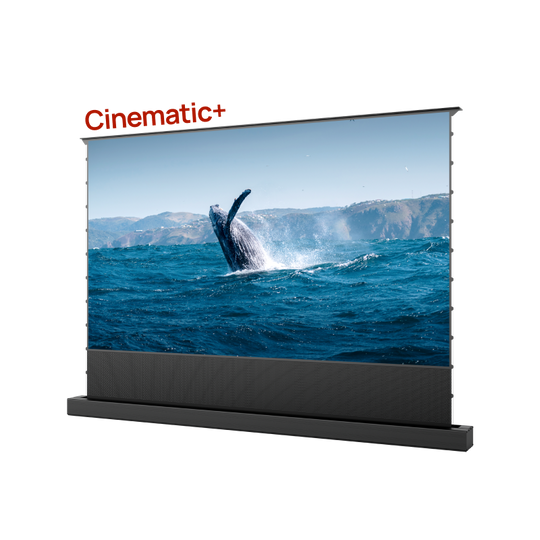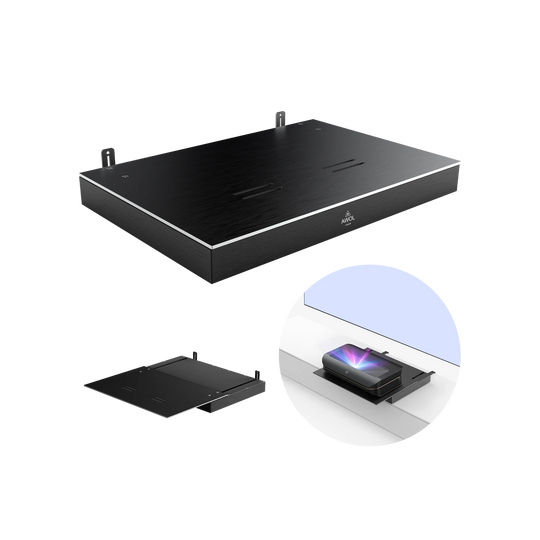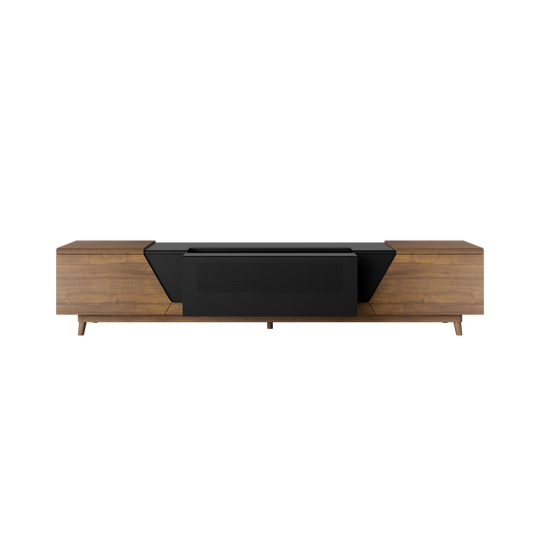Digital projection technology has undergone remarkable development in recent decades. From the bulky CRT projectors of the early days to the sleek and advanced laser TV projectors we use today, the evolution of digital projection is a testament to rapid technological progress. This article looks at the history of digital projection and highlights the key milestones from the early days of CRT projectors to the state-of-the-art RGB Laser TV projectors of today.
The Beginnings of Digital Projection - CRT Projectors
Introduction of CRT Technology
Cathode ray tube (CRT) projectors were the first form of digital projectors and appeared in the middle of the 20th century. CRT technology was based on three separate cathode ray tubes, each corresponding to one of the primary colors: red, green, and blue. These tubes projected the image onto a screen by combining their outputs to create a full-color image.
Features and Limitations
CRT projectors were known for their excellent black levels and high resolution. However, they were also very bulky and heavy, requiring a dedicated room for installation. The complexity of setup and calibration, as well as the high maintenance costs, limited their use to professional environments or dedicated home cinema rooms.
Decline of CRT Projectors
In the late 1990s, CRT projectors began to decline in popularity. Advances in other projection technologies and the demand for more compact and user-friendly solutions paved the way for their eventual replacement. One iconic CRT model was the expensive Sony VPH-G90, a 110 kg projector with a brightness of 350 lumens and a resolution of 2500 x 2000.

The Triumph of LCD Projectors - Epson Leads the Way
In 1989, Epson introduced the world's first LCD (Liquid Crystal Display) projector, revolutionizing the industry. The Epson VPJ-700 was a groundbreaking product that used three small passthrough LCD panels, one for each primary color, to project images.

This innovation marked a significant departure from bulky CRT projectors.
Advantages of LCD Technology
LCD projectors offered several advantages over CRT projectors. They were smaller, lighter, and easier to set up and maintain. The image quality was also impressive, with bright and vivid colors that made them suitable for a variety of applications, from business presentations to home entertainment. The only concern was the low resolution of a maximum of 1024 x 768 in first-generation LCD projectors.
Market Expansion and Competition
The success of Epson's LCD projectors spurred other manufacturers to enter the market. Brands such as Sony, Sanyo, and NEC quickly developed their own LCD projectors, leading to a rapid improvement in the technology and a drop in prices. By the early 2000s, LCD projectors had become the standard for professional and home use.
The Advent of DLP Projectors
Introduction of DLP Technology
Digital Light Processing (DLP) technology was introduced by Texas Instruments in 1987, but it wasn't until the late 1990s that DLP projectors became commercially viable. DLP projectors use a digital micromirror device (DMD) to reflect light through a color wheel to produce images with high contrast and excellent color accuracy. Infocus was one of the first brands to use the DLP technology in their consumer projectors.
The iconic first home cinema projector - Infocus X1

Advantages and Applications
DLP projectors quickly became popular due to their compact size, high reliability, and excellent image quality. They're particularly popular in home theaters and as portable business projectors. The ability to produce deep blacks, excellent ANSI contrast (a basic weakness of CRT and LCD projectors), and vibrant colors made them a favorite among movie lovers.
Continuous Development
The continuous development of DLP technology has led to the creation of 4K DLP projectors, offering ultra-high resolution and improved image quality. These projectors are now used in both the professional and consumer sectors. Behind the DLP 4K resolution is Texas Instruments' XPR technology, where a special mechanism rapidly moves the image diagonally to multiply the final pixels on the screen.
The Emergence of Laser Projectors
Introduction of Laser Projection Technology
Laser projection technology represents a significant step in the development of digital projectors. Laser projectors use laser diodes as a light source, which offers several advantages over conventional lamp-based projectors. The first laser projectors entered the market in the mid-2010s, with Casio being the brand that brought laser-sourced projectors to public attention.
The first Laser-LED hybrid projector from Casio - XJ-A250

Leading Brands and Innovations
Casio was the first brand to believe in laser technology, developing the first Laser-LED projector in 2010. Brands such as Epson and Sony have also played a pioneering role in the development of laser projectors. Epson's LS10000, launched in 2014, was one of the first laser projectors for home theater, offering 4K enhancement and a high contrast ratio. Sony's VPL-VW5000ES, launched in 2016, brought true 4K resolution and HDR compatibility to the market.
Advantages of Laser Projectors
- Brightness: Laser projectors can achieve much higher brightness than lamp-based projectors, making them suitable for large venues and outdoor use.
- Longevity: The lifespan of laser light sources is much longer than that of conventional lamps, often exceeding 20,000 operating hours.
- Color Accuracy: Lasers can produce a wider color gamut, resulting in more accurate and vibrant colors. There is also no color “drift” over time as with lamp-based projectors.
- Instant On and Off: Unlike lamp-based projectors, which require warm-up and cool-down periods, laser projectors can be turned on and off instantly.
The Future of Digital Projection - Laser TV Projectors
The Rise of RGB Laser TV Projectors
Laser TV projectors have revolutionized video projection. With this new generation of projectors, the gap between televisions and projectors in terms of practicality has dramatically narrowed, while preserving the magic of a big cinema-like reflective projection image. Equipped with the latest generation of RGB laser light sources, ensuring an even wider color palette than standards like BT.2020 and unparalleled brightness, this new generation of projectors is captivating not only home cinema enthusiasts but others as well.
The ability to place them just a few centimeters away from the projection surface makes them incredibly easy to install even in very small rooms. Their combination with special CLR screens, which reject up to 90% of ambient light, transforms them into a variable-size TV with an incredibly reflective UHD image. They support all the latest standards such as Dolby Vision and HDR10+, delivering a picture that was beyond the dreams of big-picture enthusiasts just a few years ago.
Applications and Future Trends
RGB Laser TV projectors are currently the most advanced solution for video projection and are gradually becoming a permanent fixture in living rooms. Thanks to their advanced technology and excellent image quality, they are finding applications in home entertainment, business presentations, and educational institutions. The future of digital projection is likely to be dominated by laser technology, with continuous improvements in resolution, brightness, and color accuracy.
Conclusion
Digital projection has come a long way from the bulky CRT projectors of the mid-20th century to the sleek and advanced laser TV projectors of today. Each milestone in the history of digital projection has brought significant improvements in image quality, usability, and affordability. As technology continues to evolve, we can expect even more exciting developments in the world of digital projection.



